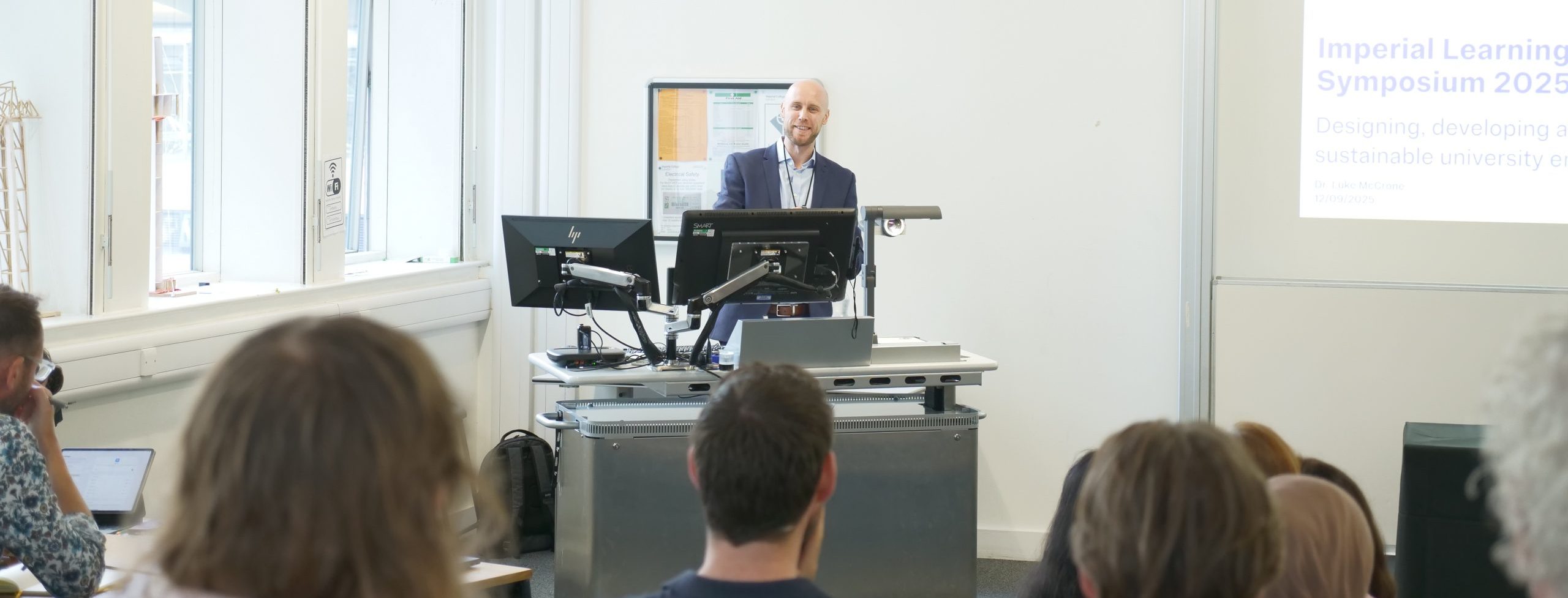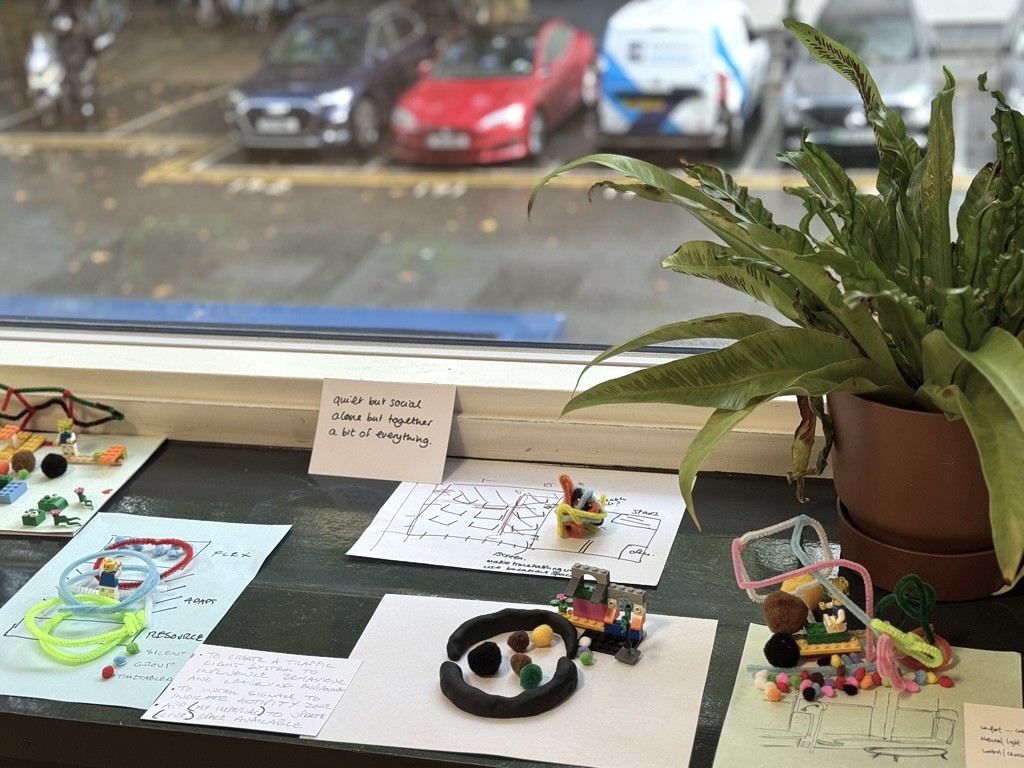 Overview
Overview
On Friday 12th September 2025, around 60 people ranging from architects and learning space researchers to educators and students, gathered for the inaugural Imperial Learning Space Symposium (ILSS). The theme was Designing, developing and delivering sustainable university environments.
The event, co-organised by Dr Luke McCrone (CHERS) and Dr Zachery Spire (Oregon State University), took place on Imperial’s South Kensington campus. The programme brought together speakers from institutions across Ireland, Wales and England, spanning academia, professional services and university leadership. Attendees reflected this diversity, offering perspectives from both within and beyond higher education. See university (left) and non-university (right) representation below:


Organisations attending ILSS 2025
Five key takeaways
Across the talks and discussions, several key themes emerged that can guide how universities approach the design, development and delivery of a more sustainable campus estate.
- Design for connection and informal conversations
Dr Paul Temple introduced ideas from his recent book The Connected University, arguing that connection is central to success in learning, teaching and research. Spaces should not only enable students and staff to connect with each other, but also link the present meaningfully with past and future. For spaces to become places, they also need to be connected thoughtfully with social activity and other spaces.
Building on this, Dr Zachery Spire highlighted the role of informal conversations in ‘leaky’ or ‘in-between’ spaces, echoing Dr Luke McCrone’s use of the ecotone concept. It was posited by several participants that such spaces may be especially beneficial for marginalised students. Dr Hiral Patel extended the discussion through insights from the Social Learning @ University report, introducing the Bond–Bridge–Connect framework, which emphasises the progression from bonds in communities to deeper social connections (see diagram below).

Bond-bridge-connect framework, Social Learning @ University report (p. 16)
- Space co-design requires us to ‘thinker’
Dr Briony Supple and Dr Katie Power’s workshop gave attendees a useful window into what genuine user-driven co-design can feel like. Using playful tools like Play-Doh and Lego, participants were encouraged to engage in ‘thinkering’ (combine thinking and making) to reimagine the physical room we were in.
Groups adopted the lens of student personas and worked to set budgets. This exercise showed how “trying on” different student perspectives can enhance inclusive design. It also underlined the need to give equal attention to both the problem space and the solution space.

Photo of redesigned space model from ILSS workshop
- Digital can enrich the physical
Dr Daniel Mitelpunkt showcased the innovative work of Imperial’s Digital Media Lab, demonstrating how tethered and untethered virtual reality (VR) can expand the learning potential of traditional physical spaces.
He stressed the importance of recognising the unique affordances of each modality (physical, digital, VR) and how using them strategically can unlock a better learning experience. VR in particular offers possibilities for highly personalised and meaningful learning experiences.
- Universities as SDG enablers
Professor Simone Buitendijk, Deputy Vice-Chancellor and Provost at the University of Salford, argued that universities are uniquely positioned to address all 17 Sustainable Development Goals (SDGs).
She emphasised the role of space in supporting diversity, belonging and identity, and in enabling agentic engagement with other institutions and communities. Future spaces, she suggested, must be designed to support active, discovery-based pedagogies.
- Embrace diverse perspectives on space
In the closing plenary discussion, panellists Deb Ray, Emilio Garcia Padron, Dr Katie Power and Professor Martyn Kingsbury shared their own perspectives on sustainable learning spaces. Dr Luke McCrone concluded the symposium by reminding us that space is a shared yet deeply personal experience, and that the best outcomes will come from an “elegant compromise in design.”
What looks “good” to an architect may differ from the vision of an engineer, a student or an educator. Finding a common language, such as ecological thinking, is vital for enabling these groups to collaborate productively around space.
Final thoughts
The first ever ILSS event has created real momentum in the learning space community. To sustain this, it will be important to “keep the conversation going”, including through another symposium or conference at Imperial or beyond.
If you have reflections on ILSS 2025 or this blog, please get in touch with Dr Luke McCrone (luke.mccrone@imperial.ac.uk).